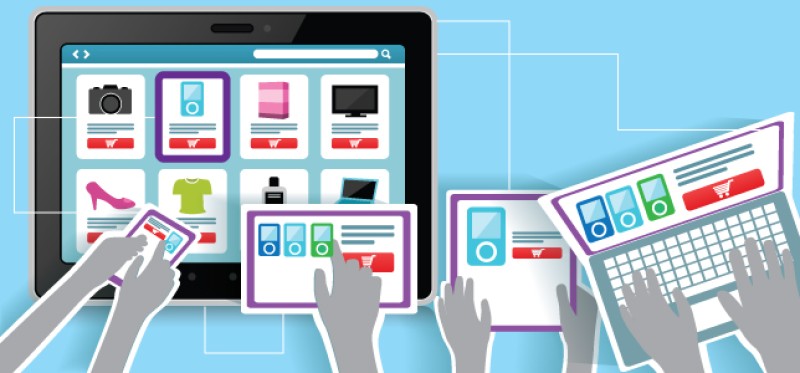The omnichannel customer experience has become a must-have for retailers, but businesses still struggle to provide a seamless, interconnected experience. And without an attribution model, companies are already at a disadvantage.
To improve the customer experience, companies must be able to measure the true value of their efforts. Multichannel attribution modeling can help business leaders more clearly understand what’s working and which areas have weak spots as they develop an omnichannel strategy.
In an omnichannel customer experience, the customer can order a dress on her smartphone or laptop, pick it up in person, and return it at the store or by mail with her purchase history, credit card information, and personal preference data following her from channel to channel.
Following a customer from digital devices, to brick-and-mortar locations, and other outlets requires a careful orchestration of people, technologies, and business practices. Very few businesses have accomplished this, but more are getting closer. Companies, for example, are striving to connect data between their various marketing campaigns with data from sales and their customer service departments.
Customers engage with businesses through various touchpoints but companies that want to invest in omnichannel don't know which touchpoints lead to a sales conversion. A consumer, for example, might start with a product search on a laptop, then look at the product in the store, read reviews on a smartphone, and then complete the order on a tablet app. Based on last-click attribution, the company might give credit only to the tablet app because it is directly tied to the sale.
There are numerous ways for a company to map its channels, and one way is to create a scorecard. For example, start with a list of your top 10 channels and create separate columns for assisted conversions and the amount of last-click conversions that can be attributed to each channel. You’ll need an analytics tool for help but this can give you an idea of how each channel performs and how they complement each other.
The scorecard can also inspire ideas for further assisting your customers. If customers tend to visit your store before buying the product, consider equipping sales associates with mobile POS systems so that customers can more easily purchase the item and walk out with it on the spot. Additionally, you may find areas where you could more actively engage users, such as on social media or chat. Do you have sales reps who can quickly respond to a customer’s question on your website as well as social networks?
In the race to engage customers, it is easy to get locked into focusing on just a few channels but an attribution system can help companies obtain a more holistic view. A system for tracking and comparing the KPIs for each channel should be part of the foundation of an omnichannel strategy. A lot of attention is often spent on revenue tracking, but the tougher part is understanding what led to those conversions. Measuring those KPIs from an assisted conversion standpoint is one step forward to providing an excellent omnichannel experience.
Contributions made by Travis Low, Senior Director, Search Engine Optimization, TTEC Engage
Also, check out the most recent issue of our e-newsletter.
Related Content:
Blog Post: Search, Display Lead Marketing’s Digital Transformation
Article: Measuring the Omnichannel Customer Experience
Case Study: Financial Services Firm Combines Strategy and Technology to Build an Omnichannel Experience
Why Attribution is Critical to an Omnichannel Customer Experience















